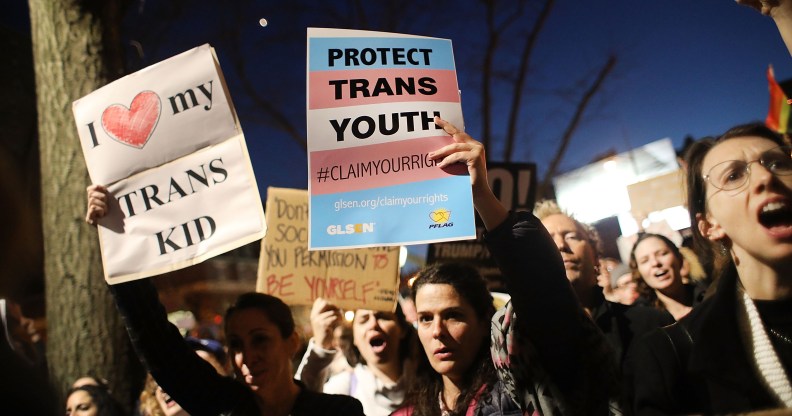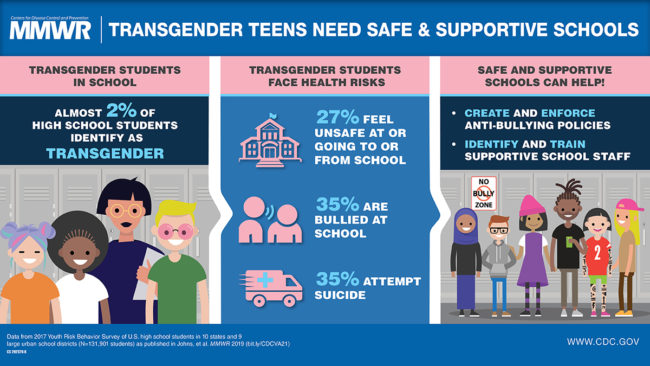A third of transgender students have attempted suicide, CDC finds

A third of transgender students across 10 states reported attempting suicide in the past year. (Spencer Platt/Getty)
A third of transgender students have attempted suicide in the past year, figures released on Thursday (24 January) indicated.
For the first time, the Centers for Disease Control and Prevention (CDC)’s Youth Risk Behavior Survey (YRBS) included an optional question in which students would be able to express their gender identity.
Ten states (Colorado, Delaware, Hawaii, Maine, Maryland, Massachusetts, Michigan, Rhode Island, Vermont, Wisconsin) and nine large urban school districts (Boston, Broward County, Cleveland, Detroit, District of Columbia, Los Angeles, New York City, San Diego, San Francisco) agreed to include the question in the 2017 survey.
Almost 2 percent (1.8 percent) of the 131,901 high school students surveyed identified as transgender and, among these transgender students, 34.6 percent reported having attempted suicide in the past year.
The same percentage (34.6 percent) reported being bullied at school.

Almost 2 percent of the 131,901 high school students surveyed identified as transgender. (CDC via The Trevor Project)
The survey noted overall higher experiences of various forms of violence, from sexual abuse to physical violence, among transgender students compared to their cisgender—who identify with the gender assigned at birth—peers.
Transgender students also reported higher levels of substance abuse, particularly alcohol and marijuana.
The CDC survey did not examine possible causes for these findings, but researchers advised “taking steps to create safe learning environments and provide access to culturally competent physical and mental health care” as measures to improve the care for transgender students.
CDC praised for focusing on transgender students
LGBT+ activists have commended the government organisation for including a focus on gender identity.
“In order to make policy changes, we need to have hard numbers to point to,” said Caitlin Clark, a research associate at GLSEN, a national nonprofit championing a supportive school environment for LGBT+ students, quoted in NBC News.
“Trans youth don’t experience poorer mental health or higher suicidality because it’s something that comes with being trans,” Clark added. “Trans people have poorer mental health because they are at higher risk of victimisation and discrimination.”
The Trevor Project, an organisation dedicated to providing LGBT+ youth with mental health support including suicide prevention, called the survey “game-changing” in a statement to the press.
“The CDC’s findings highlight the need for even more policies to protect transgender and gender nonconforming youth,” commented Amit Paley, The Trevor Project CEO and executive director.
Paley continued: “Now with inclusive health data that reflects the wide spectrum of gender identities, The Trevor Project can better inform its suicide prevention, risk detection, and response programs.
“We know the work is not over. This new YRBS data is game-changing, but still incomplete as long as only 10 states and nine large urban school districts are choosing to ask about gender identity and expression. Only by understanding who our youth are and how they identify can we craft policies to allow every young person to thrive.”
If you are in the US and are having suicidal thoughts, suffering from anxiety or depression, or just want to talk, call the National Suicide Prevention Line on 1-800-273-8255. If you are in the UK, you can contact the Samaritans on 116 123.

